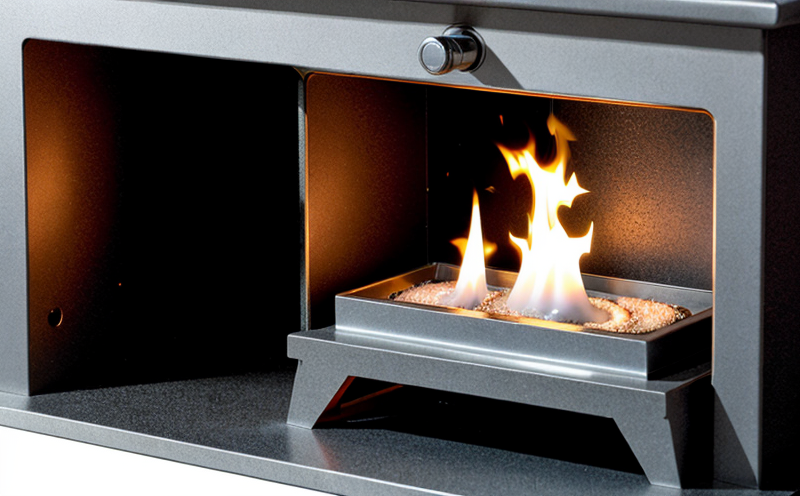In fire safety testing, surface flame spread is a critical parameter that assesses how rapidly flames can spread over the surface of materials. This test is particularly important for synthetic materials used in various industries such as textiles, automotive interiors, and building construction. The purpose of this testing is to ensure compliance with international standards like ISO 6947 and ASTM E84, which set benchmarks for flame spread indices (FSI) and smoke developed index (SDI).
The synthetic materials tested can range from plastics to composites used in the manufacturing of furnishings or vehicle interiors. The test involves subjecting a specimen to a controlled source of flame under specific conditions and measuring how quickly the fire spreads along its surface. This helps determine the material's resistance to ignition, rate of combustion, and potential for producing smoke.
The testing process is designed to simulate real-world scenarios where synthetic materials might be exposed to fire hazards. By understanding these parameters, manufacturers can refine their products to enhance safety and meet regulatory requirements. The results from this test are crucial for quality managers, compliance officers, and R&D engineers who must ensure that the products they produce or procure do not pose a risk in case of a fire.
The synthetic materials used in various industries have different properties which affect how they behave when exposed to flames. For instance, textiles made from certain polymers may exhibit higher FSI values compared to others due to their chemical composition and structure. These differences highlight the importance of precise testing methods that can capture these variances accurately.
The first step in performing surface flame spread tests involves selecting appropriate specimens based on the intended application. Specimens are typically cut into standard sizes according to relevant standards such as ISO 6947 or ASTM E84, ensuring consistency across multiple samples being tested simultaneously. Once prepared, these specimens undergo rigorous testing protocols designed to mimic realistic fire conditions.
The apparatus used for conducting surface flame spread tests includes a specialized chamber equipped with an ignition source capable of producing consistent flame temperatures and durations. The chamber is also fitted with sensors that measure the rate at which flames travel along the specimen's surface as well as any smoke produced during combustion. After igniting the sample, data on flame length, speed, and smoke generation are collected over time.
Acceptance criteria for passing this test vary depending upon specific industry regulations but generally involve achieving acceptable FSI values combined with low SDI scores indicating minimal smoke production. Compliance with these standards ensures that materials meet safety expectations both locally within individual countries as well internationally through recognized bodies such as Underwriters Laboratories (UL) or European Union legislation.
Understanding the intricacies of surface flame spread testing allows stakeholders involved in material development and manufacturing processes to make informed decisions regarding product design improvements aimed at enhancing overall fire safety performance. This knowledge is essential for quality managers, compliance officers, R&D engineers, and procurement teams who rely on accurate test results when evaluating new materials or updating existing ones.
- Environmental Considerations: Flame spread testing contributes positively to environmental sustainability by identifying safer alternatives for synthetic materials used in various industries. By promoting flame retardancy without compromising performance, manufacturers can reduce risks associated with fires while also minimizing waste streams generated during production processes.
Why It Matters
The importance of surface flame spread testing cannot be overstated, especially when considering the potential impact on public safety and environmental health. When synthetic materials ignite in a fire, they can produce toxic fumes that contribute to air pollution and pose significant risks to human life. By conducting thorough tests early in the product development cycle, manufacturers can identify vulnerabilities before large-scale production begins.
For instance, automotive interiors made from flame-retardant fabrics ensure passenger safety during accidents or fires within vehicles. Similarly, furniture manufacturers use flame-resistant synthetic materials to protect occupants against accidental ignition sources like cigarettes or candles left unattended. In commercial settings such as offices and schools, choosing appropriate synthetic materials ensures the protection of valuable assets along with occupant well-being.
Moreover, compliance with international standards demonstrates a commitment to quality and safety which enhances brand reputation among consumers who increasingly demand eco-friendly products without sacrificing functionality or aesthetics. Meeting these standards also opens up opportunities for export markets where stringent regulations govern fire safety measures across borders.
The results of surface flame spread tests provide valuable insights into the behavior of synthetic materials under fire conditions, enabling manufacturers to make informed decisions about material selection and design modifications. This proactive approach not only improves product performance but also reduces liability risks associated with non-compliant products.
Benefits
The benefits of conducting surface flame spread testing extend beyond mere compliance; they offer substantial advantages for manufacturers, suppliers, and end-users alike:
- Enhanced Product Safety: By identifying weak points early in the development process, manufacturers can implement necessary changes to enhance product safety without compromising performance.
- Elevated Brand Reputation: Compliance with international standards reflects a company's dedication to quality and sustainability, thereby enhancing its reputation among consumers who value responsible manufacturing practices.
- Potential Cost Savings: Early detection of issues through testing allows for corrective actions that prevent costly recalls or redesigns later in the product lifecycle.
- Innovation Opportunities: Understanding material properties under fire conditions can lead to innovations in flame retardancy technologies and development of safer synthetic materials.
- Regulatory Compliance: Meeting industry-specific standards ensures that products meet regulatory requirements, avoiding potential fines or market entry delays.
- Promotion of Sustainability: Flame spread testing supports the use of safer synthetic materials, reducing environmental impact and contributing to global efforts towards sustainability.
In summary, surface flame spread testing plays a crucial role in ensuring that synthetic materials used across various industries comply with stringent fire safety standards while promoting innovation and cost-effective solutions. The benefits derived from this testing far outweigh the costs associated with conducting it.





